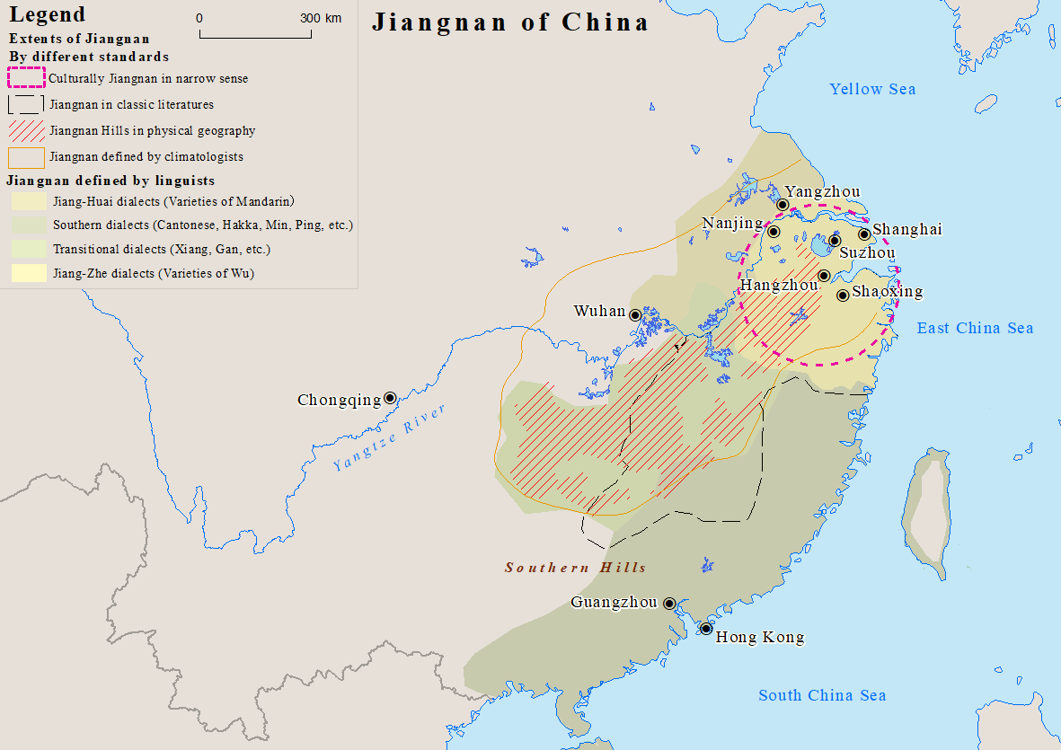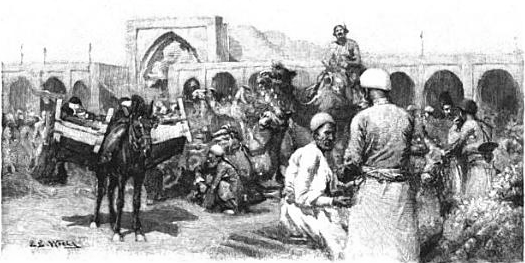|
Zhang Shicheng
Zhang Shicheng (; 1321-1367), born Zhang Jiusi (), was one of the leaders of the Red Turban Rebellion in the late Yuan dynasty of China. Early life Zhang Shicheng came from a family of salt shippers, and he himself started out in this trade in Northern Jiangsu, transporting both "legal" and "contraband" salt, as did his brothers Zhang Shiyi (), Zhang Shide (), and Zhang Shixin (). By his generosity he earned the respect of other salt workers who made him their leader when they rebelled against the oppressive government in 1353.Edward L. Farmer, ''Zhu Yuanzhang and Early Ming Legislation: The Reordering of Chinese Society Following the Era of Mongol Rule''. BRILL, 1995. , On Google Books P. 23. Since the 1340s, the Mongol-led Yuan dynasty began to face numerous crises. The Yellow River flooded constantly, and other natural disasters also occurred. At the same time, the Yuan dynasty required considerable military expenditure to maintain its vast empire. This was solved mostly th ... [...More Info...] [...Related Items...] OR: [Wikipedia] [Google] [Baidu] |
King Of Wu
The King of Wu or Prince of Wu was a title referring to Chinese rulers of the area originally controlled by the Gou Wu tribes around Wuxi on the lower Yangtze, generally known as the Wu (region), Wu region. The title ''wang (title), wang'' is written identically in Chinese, but it is common in English to distinguish between the scions of the imperial dynasties (translated "prince") and the dynasties of independent lords (translated "king"). History According to Records of the Grand Historian, traditional Chinese historians, the title was first used by two refugee princes from state of Zhou, Zhou who settled among the Hua-Yi distinction, barbarian Wu. Their state of Wu had its capital first at Meili (Wu), Meili (traditionally held to be Meicun in modern Wuxi), then at Gusu (within modern Suzhou) and Helu City (present-day Suzhou). It was established independently but became a vassal to the Zhou dynasty after its conquest of the Shang dynasty. It became independent again during the ... [...More Info...] [...Related Items...] OR: [Wikipedia] [Google] [Baidu] |
Yangtze
The Yangtze or Yangzi ( or ) is the longest river in Eurasia and the third-longest in the world. It rises at Jari Hill in the Tanggula Mountains of the Tibetan Plateau and flows including Dam Qu River the longest source of the Yangtze, in a generally easterly direction to the East China Sea. It is the fifth-largest primary river by discharge volume in the world. Its drainage basin comprises one-fifth of the land area of China, and is home to nearly one-third of the country's population. The Yangtze has played a major role in the history, culture, and economy of China. For thousands of years, the river has been used for water, irrigation, sanitation, transportation, industry, boundary-marking, and war. The Yangtze Delta generates as much as 20% of China's GDP, and the Three Gorges Dam on the Yangtze is the largest hydro-electric power station in the world. In mid-2014, the Chinese government announced it was building a multi-tier transport network, comprising railway ... [...More Info...] [...Related Items...] OR: [Wikipedia] [Google] [Baidu] |
Ming Dynasty
The Ming dynasty, officially the Great Ming, was an Dynasties of China, imperial dynasty of China that ruled from 1368 to 1644, following the collapse of the Mongol Empire, Mongol-led Yuan dynasty. The Ming was the last imperial dynasty of China ruled by the Han people, the majority ethnic group in China. Although the primary capital of Beijing fell in 1644 to a rebellion led by Li Zicheng (who established the short-lived Shun dynasty), numerous rump state, rump regimes ruled by remnants of the House of Zhu, Ming imperial family, collectively called the Southern Ming, survived until 1662. The Ming dynasty's founder, the Hongwu Emperor (1368–1398), attempted to create a society of self-sufficient rural communities ordered in a rigid, immobile system that would guarantee and support a permanent class of soldiers for his dynasty: the empire's standing army exceeded one million troops and the naval history of China, navy's dockyards in Nanjing were the largest in the world. H ... [...More Info...] [...Related Items...] OR: [Wikipedia] [Google] [Baidu] |
History Of Ming
The ''History of Ming'' is the final official Chinese history included in the '' Twenty-Four Histories''. It consists of 332 volumes and covers the history of the Ming dynasty from 1368 to 1644. It was written by a number of officials commissioned by the court of Qing dynasty, with Zhang Tingyu as the lead editor. The compilation started in the era of the Shunzhi Emperor and was completed in 1739 in the era of the Qianlong Emperor, though most of the volumes were written in the era of the Kangxi Emperor. The sinologist Endymion Wilkinson writes that the ''Mingshi'', the second longest of the ''Twenty-Four Histories'', after the '' History of Song'', is "generally reckoned to be one of the best of the ''Histories'' and one of the easiest to read." Background After the Qing dynasty seized control of Beijing and North China, the Censor Zhao Jiding ( 趙繼鼎) was asked to compile the History of Ming in 1645 (the second year of the Shunzhi Emperor). In May 1645, the court of ... [...More Info...] [...Related Items...] OR: [Wikipedia] [Google] [Baidu] |
Chen Li (Dahan Emperor)
Chen Li (; 1351–1408) was the second and the last Emperor of China, emperor of the Chinese Chen Han, Chen Han dynasty. He reigned from 1363 to 1364. Biography Chen Li was born in Mianyang ( now Xiantao, Hubei) as the second son of Chen Youliang, the first emperor of the Chen Han during the Yuan-Ming transition. His brother, Chen Shan (), was a crown prince who joined the Ming army. In 1363, his father, Chen Youliang, was shot by an arrow in the Battle of Poyang Lake. His brother, Chen Shan, fled to the Ming. Later, Zhang Dingbian () and other top generals protected Chen Li and his descendants, escorting Chen to Wuchang District, Wuchang, where Chen succeeded the throne and changed Regnal year, era name to Deshou (). In the winter of the same year, Hongwu Emperor, Zhu Yuanzhang personally visited Wuchang. Chen Youliang's father, Chen Pucai, was named Marquess of Cheng'en (), his eldest brother, Chen Youfu (), was named Earl of Guiren (), and his second brother, Chen Youzhi, wa ... [...More Info...] [...Related Items...] OR: [Wikipedia] [Google] [Baidu] |
Wu (region)
Jiangnan is a geographic area in China referring to lands immediately to the south of the lower reaches of the Yangtze, Yangtze River, including the southern part of its Yangtze Delta, delta. The region encompasses the city of Shanghai, the southern part of Jiangsu Province, the southeastern part of Anhui Province, the northern part of Jiangxi Province and Zhejiang Province. The most important cities in the area include Anqing, Changzhou, Hangzhou, Nanjing, Ningbo, Shaoxing, Suzhou, Wuxi, Wenzhou, Yangzhou and Zhenjiang. Jiangnan has long been regarded as one of the most prosperous regions in China due to its wealth in trade and very high list of administrative divisions of Greater China by Human Development Index, human development. Most people of the region speak Wu Chinese dialects as their native languages. Etymology The name Jiangnan is the pinyin romanization of Chinese, romanization of the Standard Mandarin pronunciation of , meaning "[Lands] South of the Yangtze Ri ... [...More Info...] [...Related Items...] OR: [Wikipedia] [Google] [Baidu] |
Grain Trade
The grain trade refers to the local and international trade in cereals such as wheat, barley, maize, rice, and other food grains. Grain is an important trade item because it is easily stored and transported with limited spoilage, unlike other agricultural products. Healthy grain supply and trade is important to many societies, providing a caloric base for most food systems as well as important role in animal feed for animal agriculture. The grain trade began as early as agricultural settlement, identified in many of the early cultures that adopted sedentary farming. Major societal changes have been directly connected to the grain trade, such as the Fall of the Western Roman Empire, fall of the Roman Empire. From the early modern period onward, grain trade has been an important part of Colonialism, colonial expansion and foreign policy. The geopolitical dominance of countries like Australia, the United States, Canada, and the Soviet Union during the 20th century was connected with t ... [...More Info...] [...Related Items...] OR: [Wikipedia] [Google] [Baidu] |
Nanjing
Nanjing or Nanking is the capital of Jiangsu, a province in East China. The city, which is located in the southwestern corner of the province, has 11 districts, an administrative area of , and a population of 9,423,400. Situated in the Yangtze River Delta, Nanjing has a prominent place in Chinese history and Chinese culture, culture, having served as the historical capitals of China, capital of various Dynasties in Chinese history, Chinese dynasties, kingdoms and republican governments dating from the 3rd century to 1949, and has thus long been a major center of culture, education, research, politics, economy, transport networks and tourism, being the home to Port of Nanjing, one of the world's largest inland ports. The city is also one of the fifteen sub-provincial city, sub-provincial cities in the People's Republic of China's Administrative divisions of the People's Republic of China, administrative structure, enjoying jurisdictional and economic autonomy only slightly les ... [...More Info...] [...Related Items...] OR: [Wikipedia] [Google] [Baidu] |
Chen Youliang
Chen Youliang (; 1320 – 3 October 1363For those cross-referencing the Mingshi, in the old Chinese calendar refers to the year 1363 CE, refers to 8月29日 or 29 August, and refers to 10月3日 or 3 October.) was the founder and first Emperor of China, emperor of the dynastic state of Chen Han in History of China, Chinese history. He was one of the military leaders and heroes of the people's revolution at the end of the Yuan dynasty. Biography Chen was born to a fishing family in Mianyang () in present-day Hubei. Some say he was born with surname Chen (surname), Chen (), while others say he was born with surname Xie (surname), Xie (). Vietnamese records say that Chen Youliang was the son of Chen Yiji () or Trần Ích Tắc, a Trần dynasty leader who settled in the Yuan dynasty. In his childhood, he grew up poor, and he and his family were relatively unsuccessful fishermen. Chen once served as a district official before becoming a general under Ni Wenjun during the ... [...More Info...] [...Related Items...] OR: [Wikipedia] [Google] [Baidu] |
Zhu Yuanzhang
The Hongwu Emperor (21 October 1328– 24 June 1398), also known by his temple name as the Emperor Taizu of Ming, personal name Zhu Yuanzhang, courtesy name Guorui, was the founding emperor of the Ming dynasty, reigning from 1368 to 1398. In the mid-14th century, China was plagued by epidemics, famines, and peasant uprisings during the rule of the Mongol Yuan dynasty. Zhu Yuanzhang, orphaned during this time of chaos, joined a Buddhist monastery as a novice monk, where he occasionally begged for alms to sustain himself, gaining an understanding of the struggles faced by ordinary people, while harboring disdain for scholars who only gained knowledge from books. In 1352, he joined a rebel division, quickly distinguishing himself among the rebels and rising to lead his own army. In 1356, he conquered Nanjing and established it as his capital. He formed his own government, consisting of both generals and Confucian scholars, rejecting Mongol rule over China. He adopted the concept ... [...More Info...] [...Related Items...] OR: [Wikipedia] [Google] [Baidu] |






